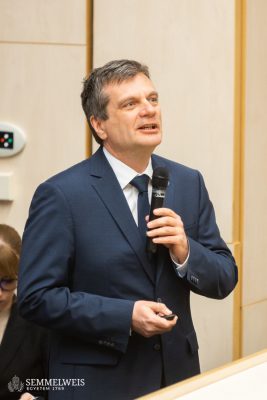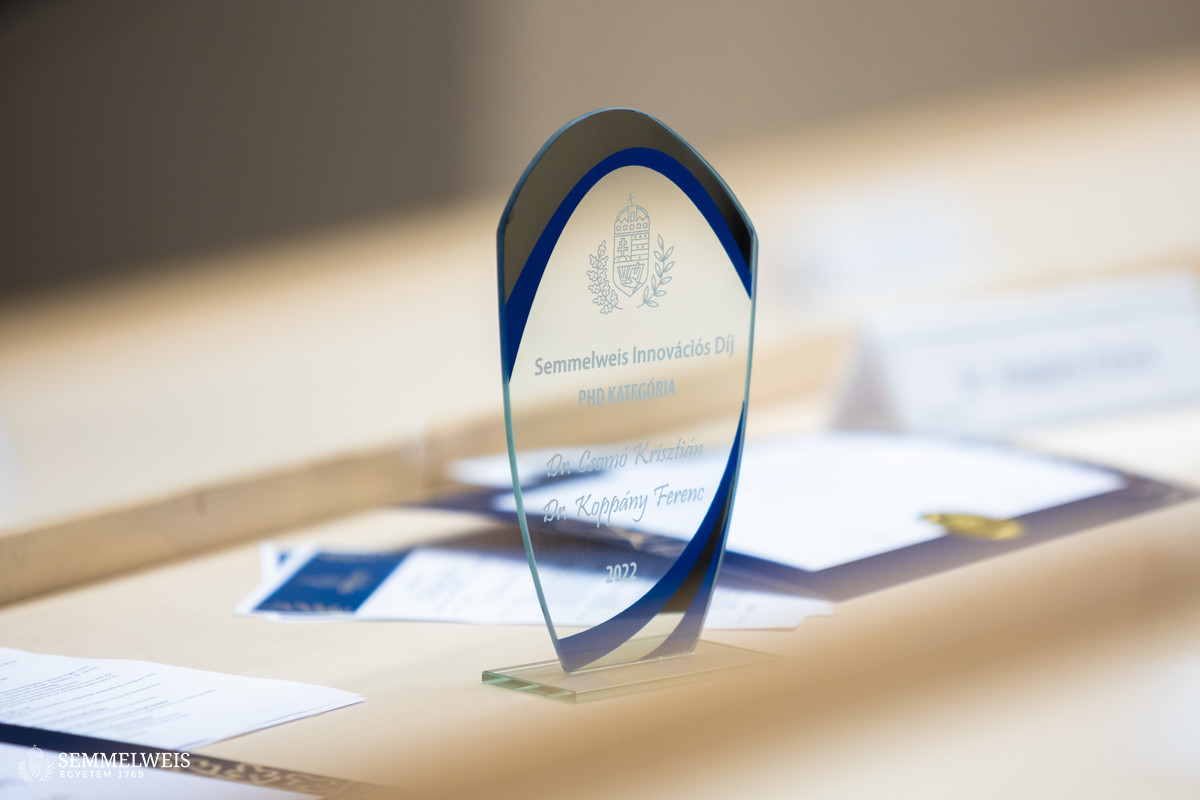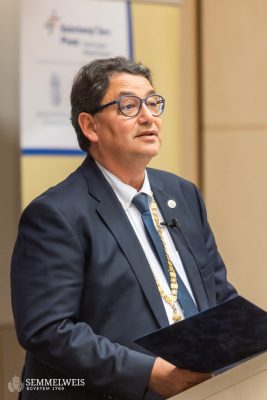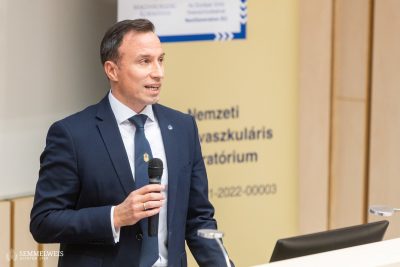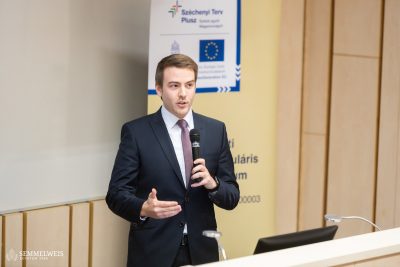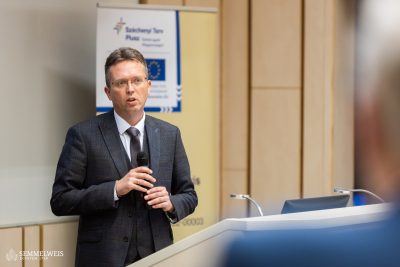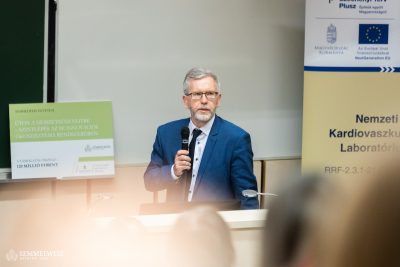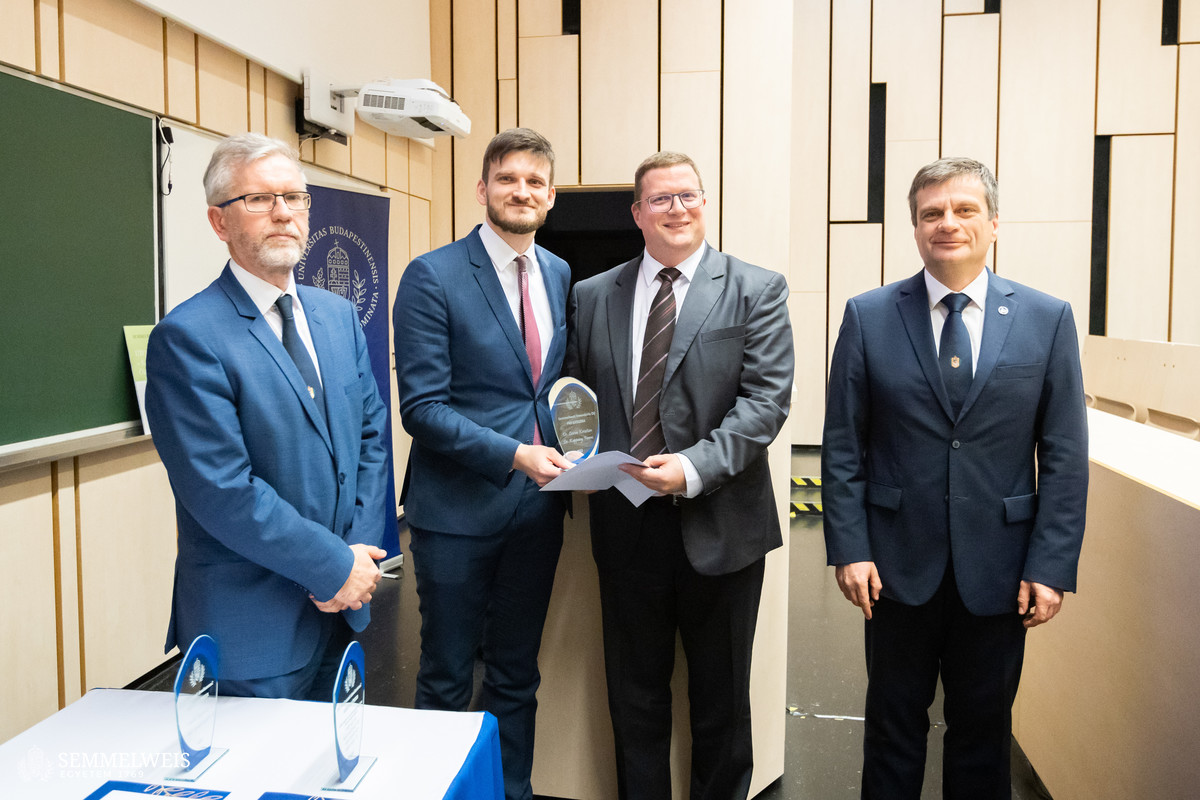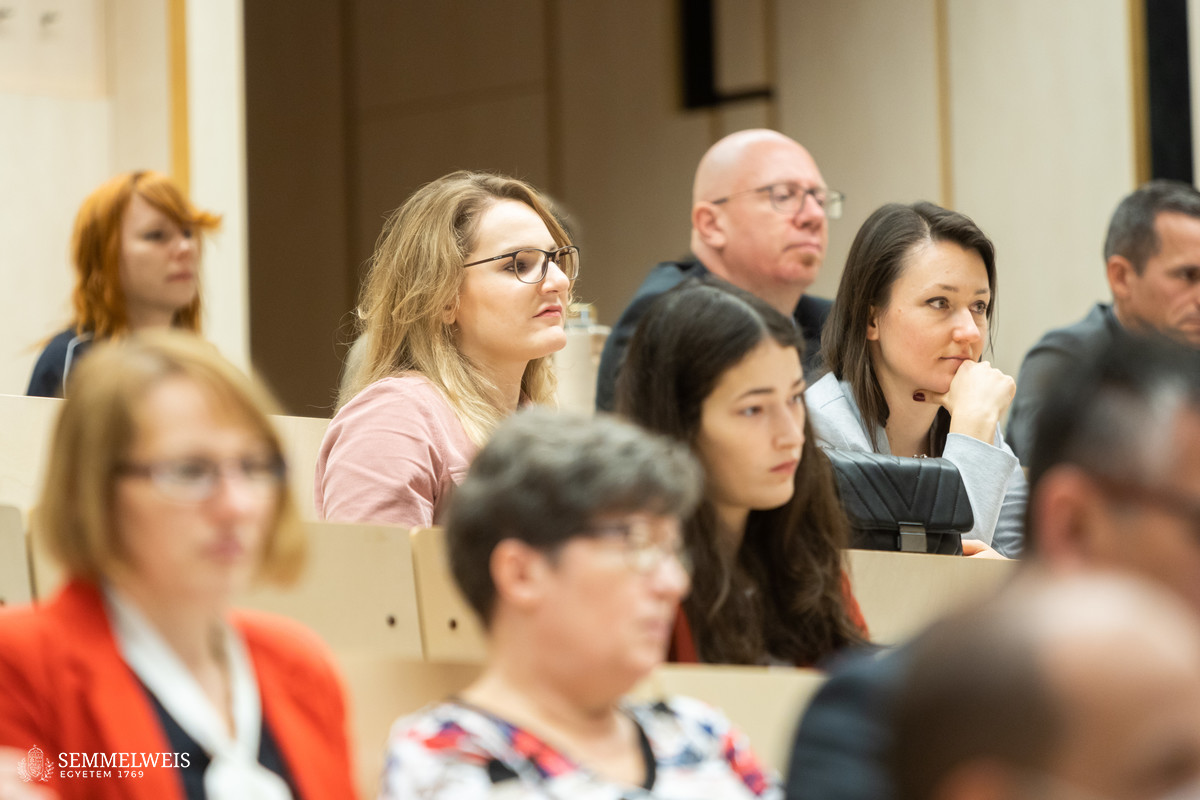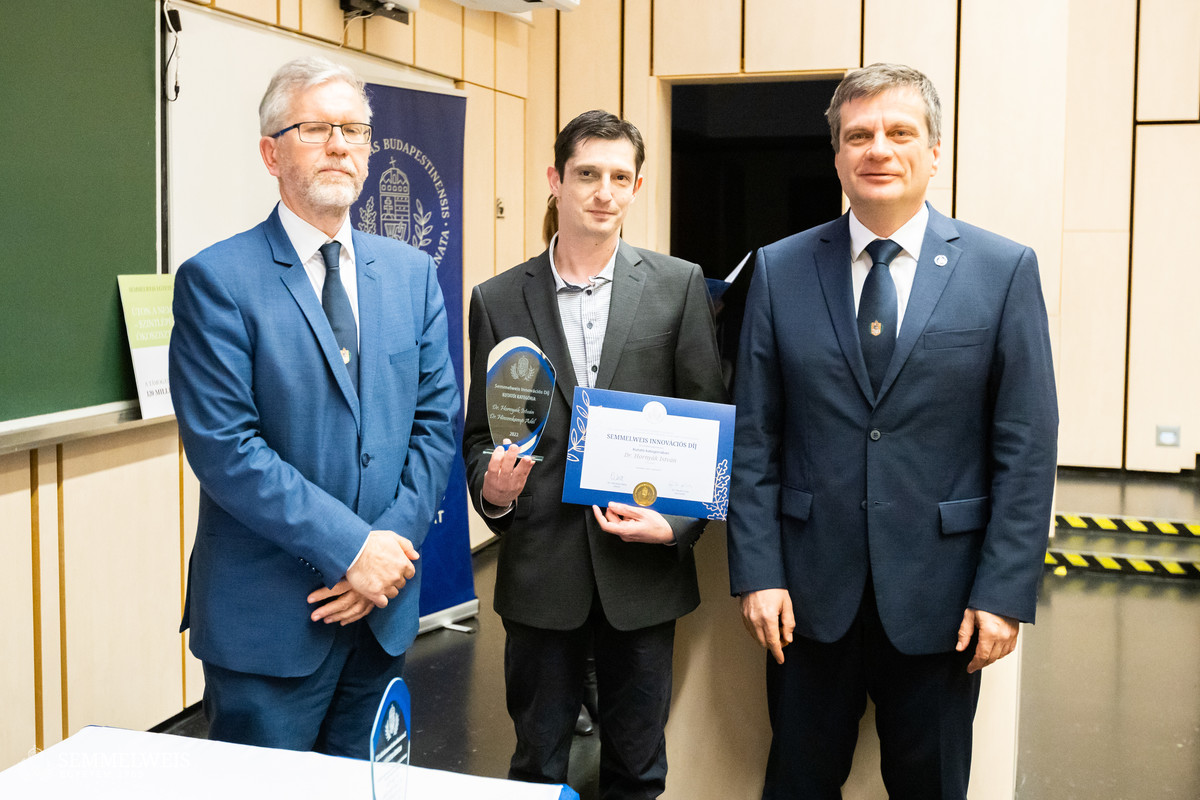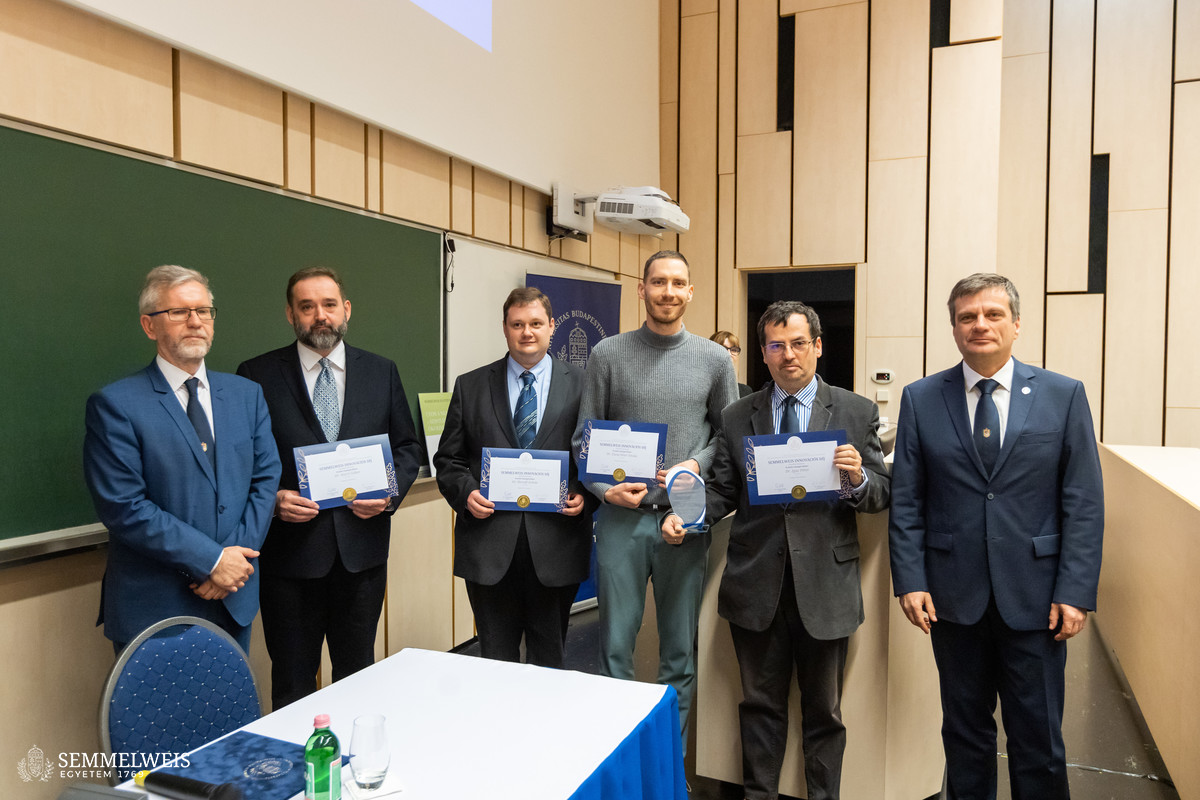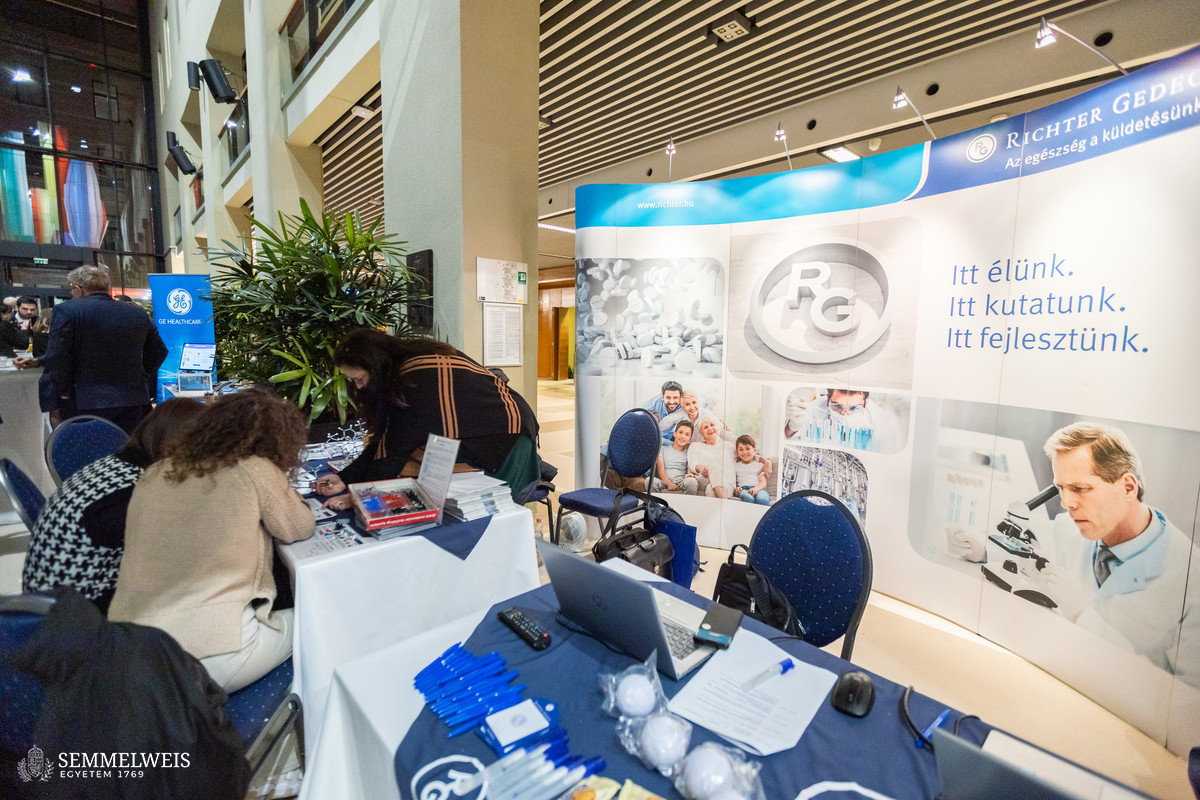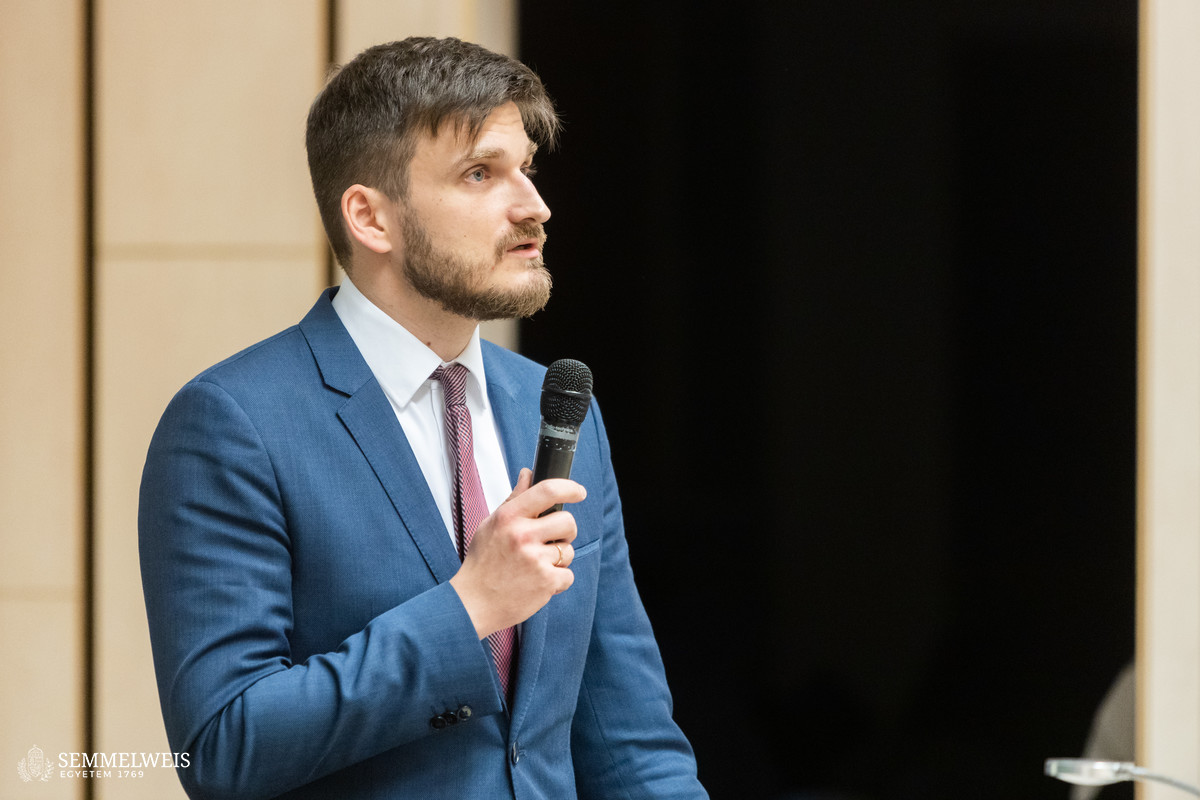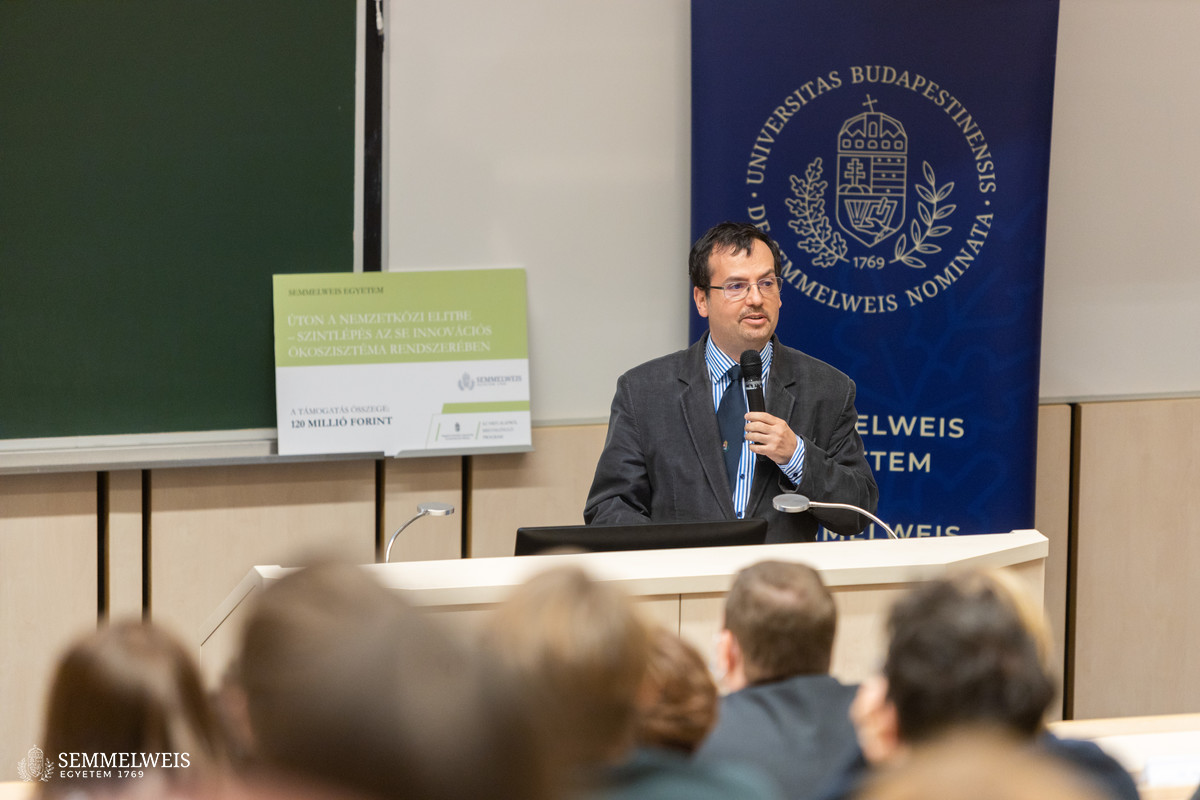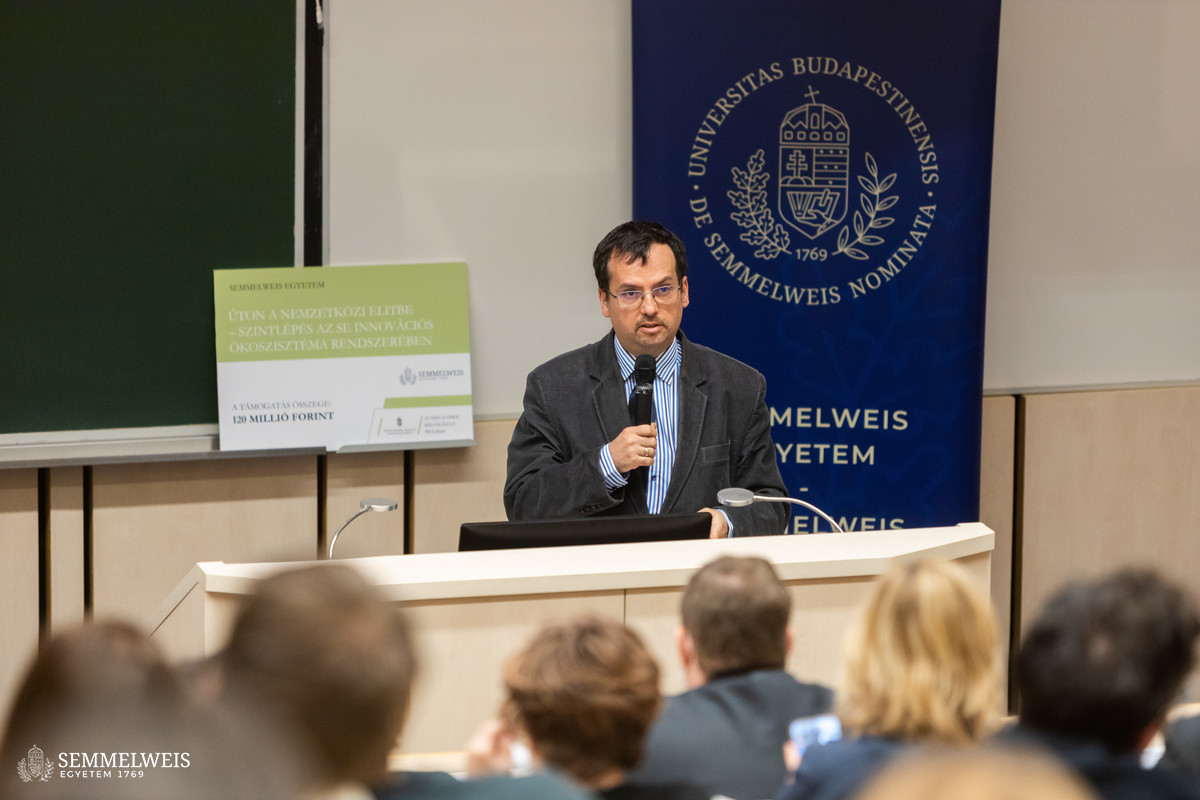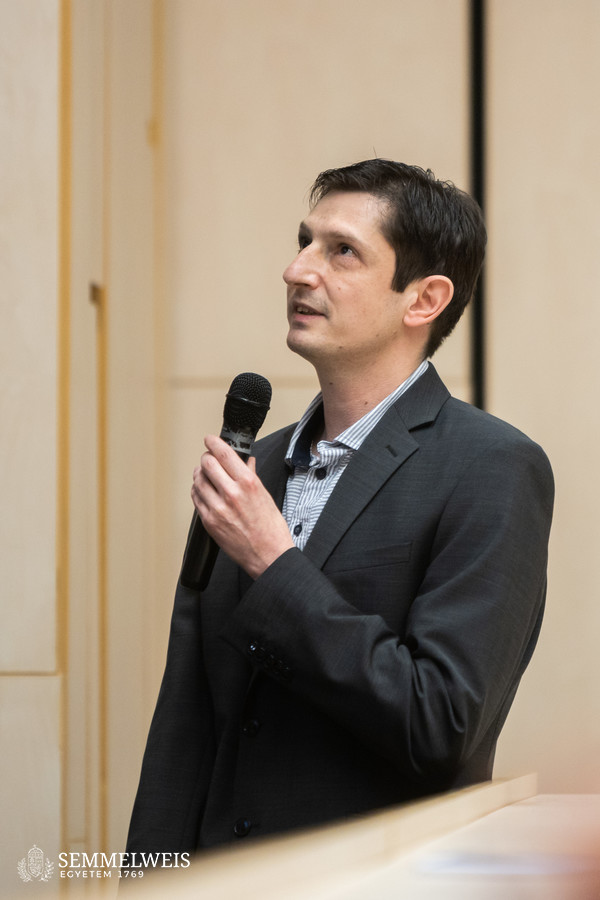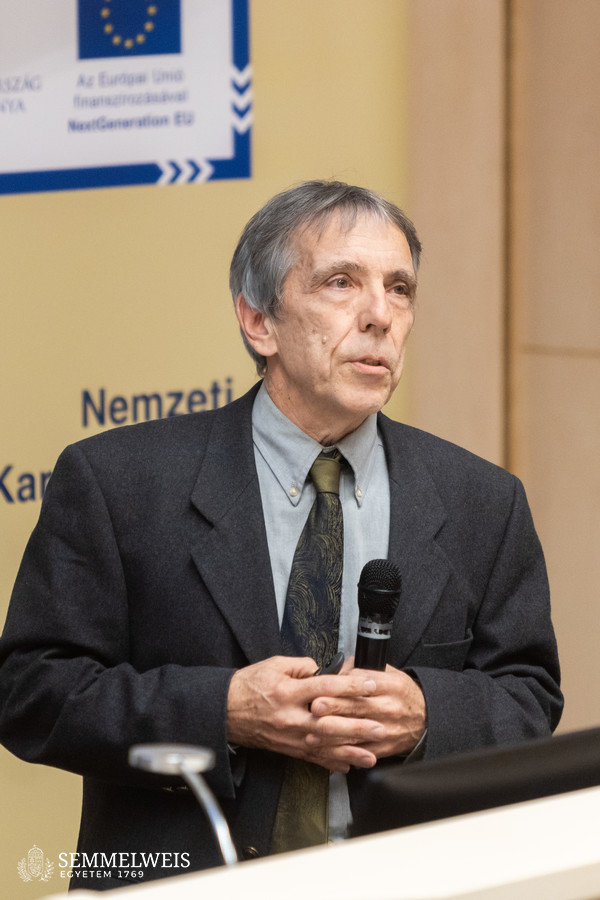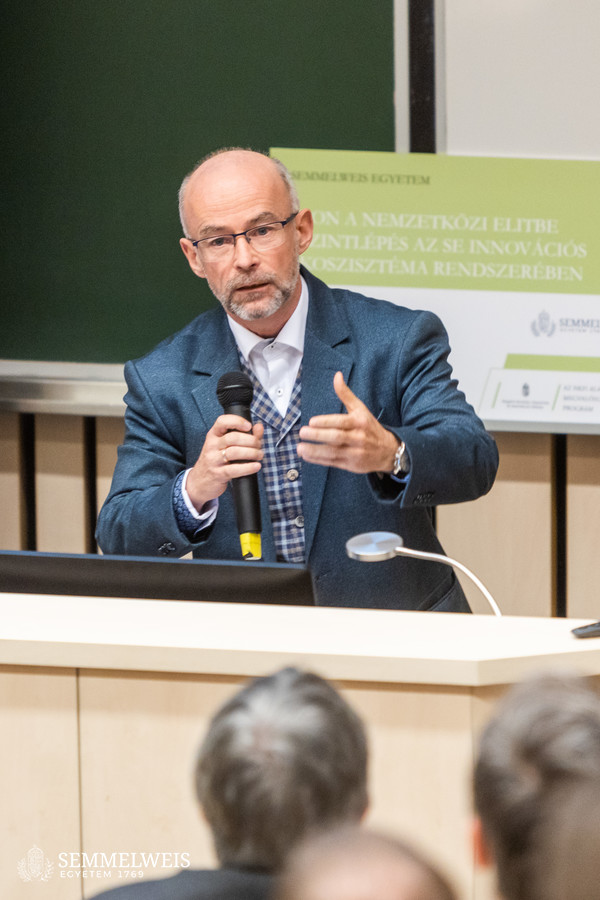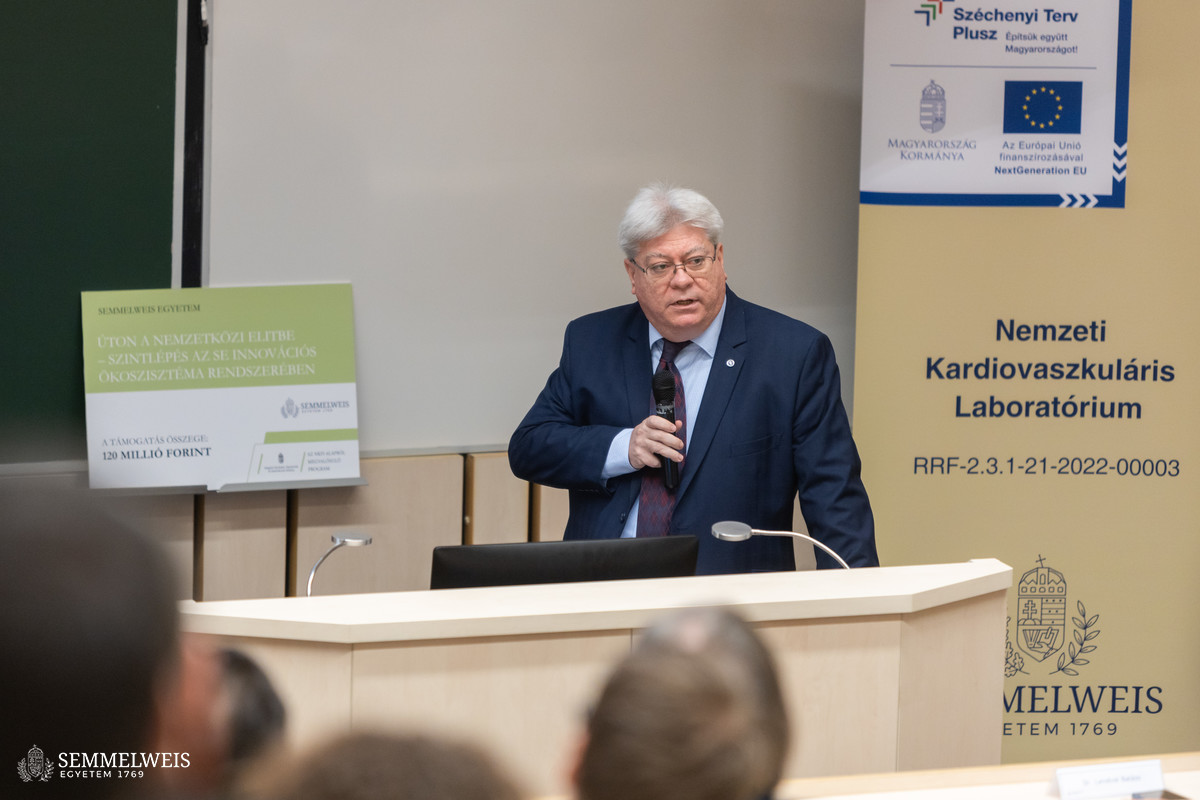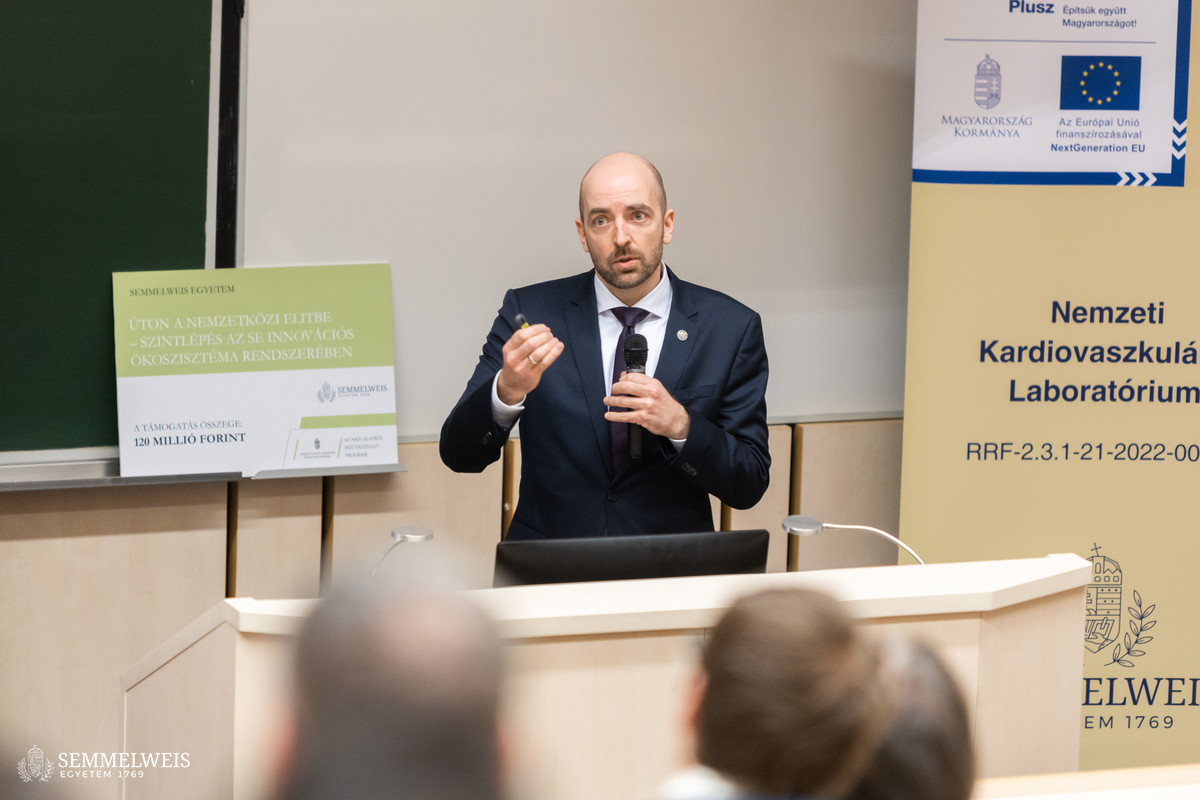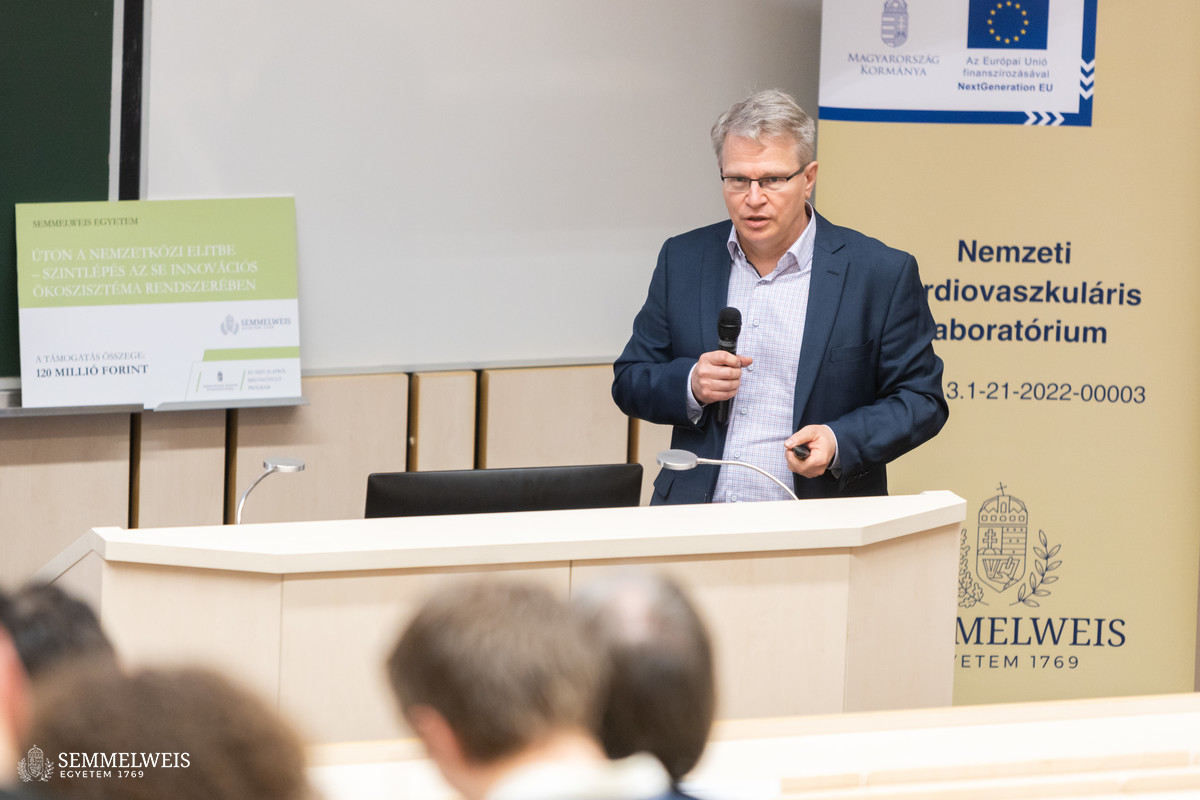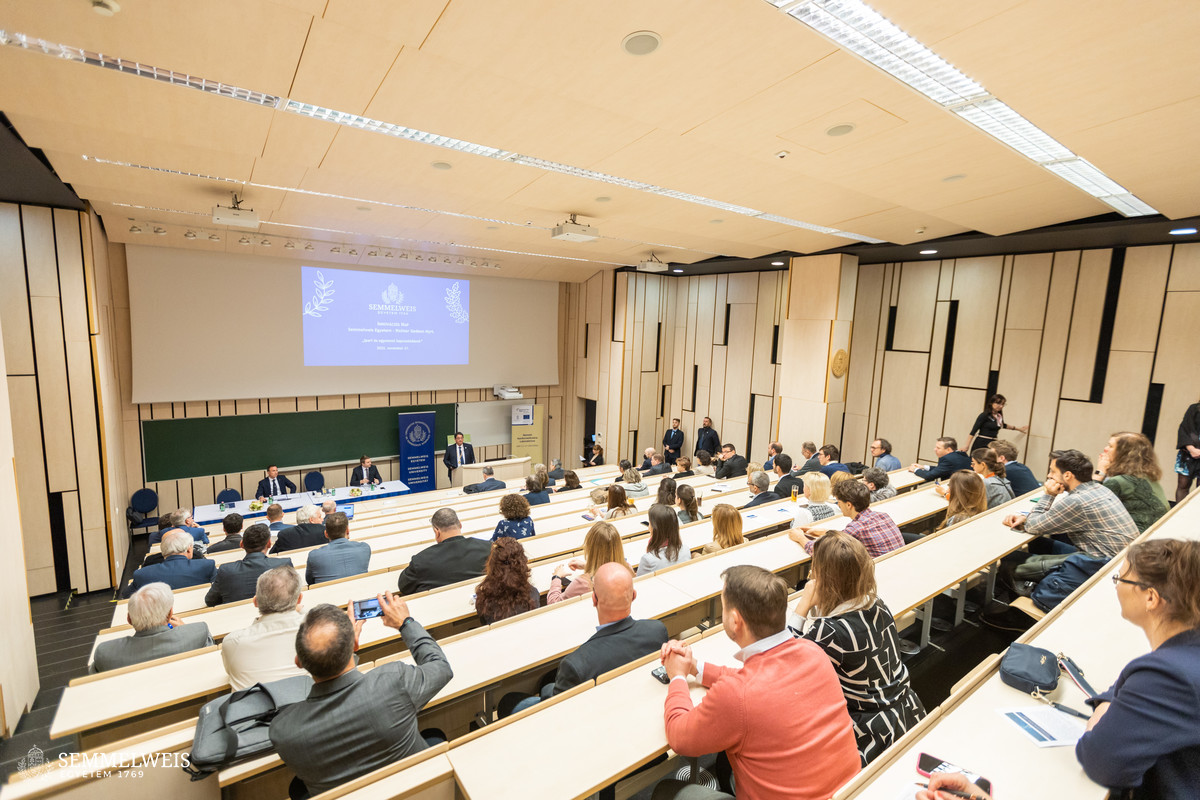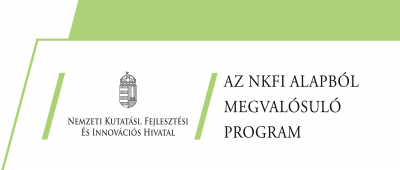The event, organized in collaboration with Semmelweis University and Richter Gedeon Plc., started with the A4Life Discussion in the Theoretical Block at Nagyvárad Square. During the event, representatives and experts from the National Research, Development and Innovation Office, Oncompass Medicine Hungary Ltd., GE Healthcare, and Semmelweis University discussed international and national collaborations between universities, industry partners and decision-makers and their role in the innovation ecosystem. Afterwards, the participants had the opportunity to talk informally with those interested in the program.
Dr. Péter Ferdinandy, Vice-Rector for Science and Innovation, gave a presentation on the university innovation ecosystem. He pointed out that Semmelweis University is now ranked 236th in the world by Times Higher Education and 43rd in the world in the field of cardiology and cardiovascular systems in the US News’ Best Global Universities list. “The goal is to be in the top 100 and among the top 5 medical universities in Europe, and to achieve this, we need to improve our innovation ecosystem in the healthcare industry,” he said. He also highlighted the strategic goals for research and innovation, including the Core Facility system, the importance of patents and spin-offs, and the significance of doctoral students. “The number of PhD students is the basis for scientific results and innovation,” the Vice Rector highlighted, stressing that this number is constantly increasing at Semmelweis University, which is one of the reasons why the institution has moved up in the rankings. Dr. Ferdinandy pointed out that if a student wants to be part of the university innovation ecosystem, he or she should start with a TDK and continue with a PhD, and during research it is important to always think about innovation and intellectual property protection. If one has an intellectual property, it is definitely worth taking it to the market.
Afterwards, the Innovation Awards were handed over. According to the decision of the Senate, the most innovative PhD thesis award was given to Dr. Krisztián Benedek Csomó and Dr. Ferenc Koppány for their thesis “Development of a method for the production of a hydrophilic nanostructured titanium surface”. Two research groups won the award for the researcher category this year: Dr. István Hornyák and Dr. Adél Hinsenkamp for their work on the “Effect of hyaluronic acid scaffolds on stem cell viability”, while Dr. Péter Igaz, Dr. Péter István Turai, Dr. Gábor Nyirő and Dr. Zoltán Herold received the award for their research on “Diagnostic procedure and microRNA biomarker diagnostic kit combination for reliable isolation of adrenocortical tumors from biopsied or excised tissue samples before small amounts of surgery” from Dr. Péter Ferdinandy, Vice-Rector for Science and Innovation and Dr. Gyula Szigeti, Director of the Innovation Centre. The award winners gave a short presentation on their research, which will be the subject of a separate article.
The block on the strategic aspects of health sciences and health industry cooperation was opened by the Rector Dr. Béla Merkely. “Research, discovery is first and foremost a vision, an approach, which is a prerequisite for progress and development. This is of particular importance today, on Semmelweis University Innovation Day, the celebration of scientific and research work at the University,” he said. He added: medicine and health science is one of the fastest developing disciplines, but it is also the most competitive. This entails that to be successful is a major achievement. The University is therefore constantly developing and evolving in line with its status, importance and mission. Innovation is present in all three areas of the University’s activity: education, patient care and research. Dr. Béla Merkely also referred to the good results achieved in higher education rankings and the good relationship of the institution with Richter Gedeon Plc. He pointed out that the most prominent pharmaceutical company and University of East-Central Europe share many similarities and synergies. These include Semmelweis joining the 150th anniversary of Richter Gedeon’s birth; 11 joint research projects since 2008 and ongoing cooperations; the Business Technology Laboratory of the Faculty of Pharmacy taking Richter Gedeon’s name; and the establishment of a Richter department at the University. In his welcome address, the Rector drew attention to the newly launched National Cardiovascular Laboratory, which will be one of the flagships of research in Hungary.
Gábor Orbán, Chairman of the Board of Trustees of the Foundation for National Health Care and Medical Education, CEO of Richter Gedeon Plc., highlighted in his speech that innovation in today’s world is different from the so-called closed system of the past, when innovation took place within the organization. Today, innovation is open, occurring within or beyond the boundaries of the organization. This is why Richter is also looking for links with other organizations of the discipline. It has partnerships with several large universities in Hungary, most notably Semmelweis University. The CEO used an illustrative analogy to show that a major industrial company creates a so-called innovation ecosystem around itself, in which it does not “hunt and gather” its environment, but rather “cultivates” and develops it. In the case of their collaboration with Semmelweis University, this means research projects, targeted thematic research proposals, talent fostering, and strategic partnerships. As he said, the three target areas of innovation for Richter are the treatment of diseases related to the central nervous system; the development of biotechnology, particularly in the treatment of osteoporosis; and the development of gynecological products. Semmelweis University is also being relied on in these areas, the chairman of the board of trustees pointed out.
Dr. Zsolt Szombathelyi drew attention to the important role of the time factor in development. The Head of the Innovation and Tender Office Department of Richter Gedeon Plc. presented the concept of innovation through the example of the company, which includes not only the novelty of the product but also its practical applicability and response to social needs. It is also important that the producer realizes a business income and profit. In this context, he stressed that it is essential to respond to emerging societal needs as soon as possible, as delays mean a significant increase in development costs compared to competitors, which also affects the chances of market entry and profitability. The magnitude of the costs is illustrated by the fact that the development of a single drug molecule is estimated to cost around USD 2 billion. In this context, it is an important achievement that Richter already has a product which, after several years of development, is ranked 100th in the world’s top 200 pharmaceutical sales in 2021,” he said.
The Deputy State Secretary for Innovation, László Bódis, emphasized that in recent years the government has consciously started to organize the research, development and innovation ecosystem around universities, and has set an important goal to link universities to the industrial sector, small and medium-sized enterprises and other research institutions. On R&D funding, he said that according to the Hungarian Central Statistical Office (KSH), Hungary would spend HUF 907 billion on R&D in 2021, 1.64 percent of the GDP, which is the highest amount on record so far. However, it is essential that, similarly to the best performing countries internationally, Hungary’s spending on R&D and innovation (KFI) reaches 3 percent of the GDP by the end of the decade. The Ministry of Culture and Innovation has set the focusing of KFI resources along four areas and the even stronger enforcement of economic and social utilization as its strategic tasks for the next period, said the deputy state secretary.
Dr. Balázs Hankó, Deputy State Secretary for Higher Education, stressed that the Hungarian research-development-innovation triad should be university-centered. For higher education institutions, the three pillars of development are the quality of education and training, the “missionary” impact of higher education on their environment and its activities, and the improvement of research performance. The aim is to ensure continuous KFI in close cooperation between universities and industry. This is where the Hungarian government wants to encourage higher education institutions and leading research universities. An excellent example is Semmelweis University, which, with some of the advances it has made in the world rankings, can receive a full year’s worth of funding, equivalent to its research performance, worth several billion forints, which it can then use for further development,” the Deputy State Secretary added.
Dr. Gyula Szigeti, Director of the Innovation Centre of Semmelweis University, emphasized the role of National Laboratories in innovation. More than twenty such consortia have been launched in Hungary, of which Semmelweis University is involved in the work of five National Laboratories. Their objectives include promoting more accurate diagnoses, artificial intelligence-based decision making and decision support, developing transparent healthcare decision mechanisms to reduce the time spent at home with illness and the burden on social security, and developing new industry collaborations through consortial links. Of the five collaborations, the University is the lead partner in the National Cardiovascular Laboratory and a consortium partner in four others. Overall, the total amount of support for Semmelweis in these collaborations reaches HUF 10 billion, the director said in his presentation.
Dr. Béla Merkely, Rector of the University, gave a presentation on the National Cardiovascular Laboratory as its professional director. In his talk, he showed that in terms of lifetime prevalence, about 70 percent of the Hungarian population is affected by some cardiovascular disease, which in itself shows the justification for this consortial cooperation. As he said, the three areas of work here are clinical, epidemiological, innovative drug biotechnology developments; the use of medical diagnostic tools and the application of artificial intelligence-based decision support systems. Later on, Dr. Ferdinandy spoke about pharmacological research at the National Cardiovascular Laboratory, involving three institutes and one industrial partner. Afterwards, the Vice-Rector for Science and Innovation gave a presentation on a few ongoing projects. Dr. Zoltán Ungvári, Professor at the Department of Public Health, reported on his work at the National Cardiovascular Laboratory. He is working on a program that promotes healthy ageing, of which they are implementing the cardiovascular pillar. This includes the Semmelweis Study, in which 8,600 employees of the university are involved in physiological studies. Dr. Béla Molnár, Research Professor at the Department of Internal Medicine and Oncology, gave a brief overview of their studies on ageing, which aim to determine biological age.
Dr. Attila Bódis, Head of the Department for Pharmaceutical Development of Richter Gedeon Plc., gave a presentation on the challenges the company faces in the field of pharmaceutical development. Dr. Pál Maurovich Horváth, Director of the Medical Imaging Clinic at Semmelweis University, gave a presentation on data-driven developments at the University. Dr. János Éles, Deputy Head of the Department of Chemistry, Head of the Pharmaceutical Chemistry Research Laboratory, spoke about the challenges of medicinal chemistry in small molecule CNS drug research. Dr. Balázs Lendvai, Head of the Pharmacology and Drug Safety Research Department of Richter Gedeon Plc. Head of the Pharmacology and Drug Safety Research Department reported on the importance of translational research in the field of industrial drug development.
Róbert Tasnádi , Ádám Szabó
Translation: Veronika Jávor-Szelid
Photo: Bálint Barta – Semmelweis University
